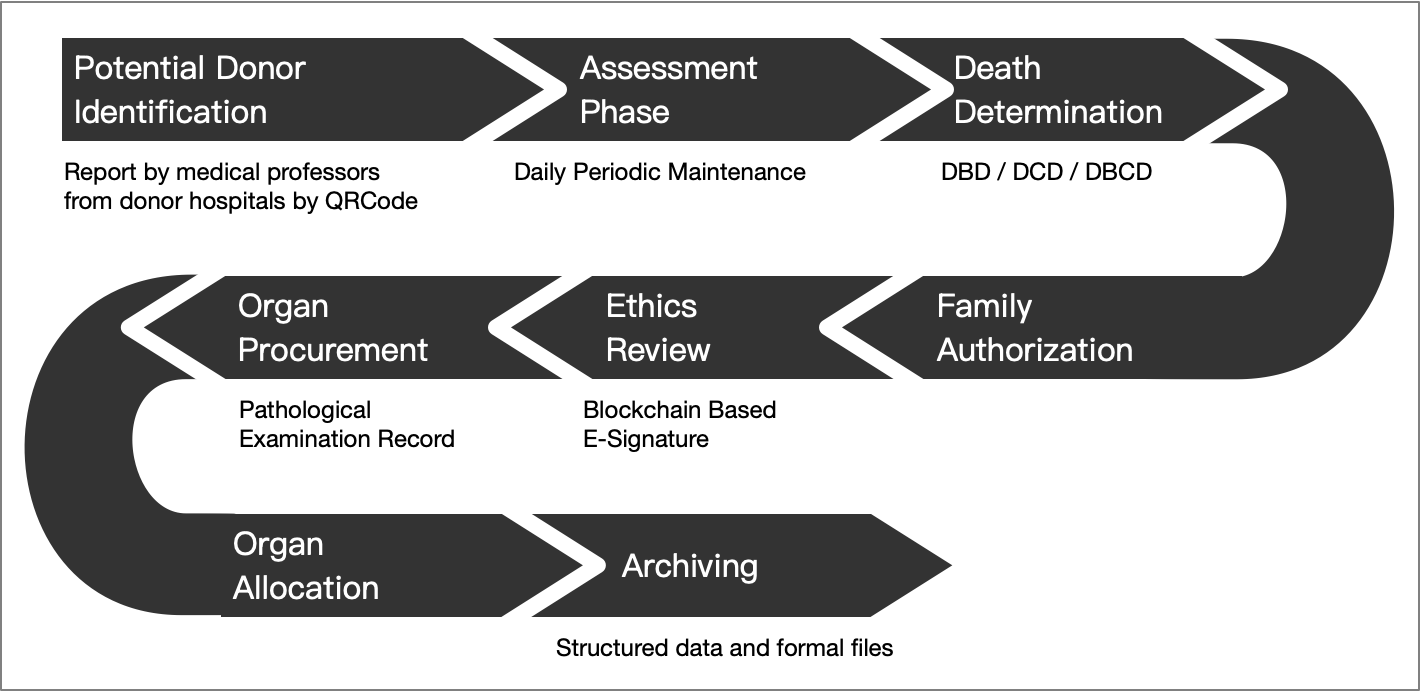Implementation of a 5G technology-based IT platform to facilitate organ donation and procurement process in China
Hongtao Zhao1, Miao Pu2, Jie Zhao3, Chunru Liu3, Mizhen Zhang3, Lichen Dai4.
1Chairman, China Organ Transplantation Development Foundation, Beijing, People's Republic of China; 2Secretary-General, China Organ Transplantation Development Foundation, Beijing, People's Republic of China; 3Department of External Relations, China Organ Transplantation Development Foundation, Beijing, People's Republic of China; 4R&D Center, Hangzhou Yungu School, Hangzhou, People's Republic of China
Introduction: Organ donation and procurement is a complex process requiring close coordination between donor hospitals, Organ Procurement Organizations (OPOs), and transplant centers. In China, the China Organ Transplantation Development Foundation (COTDF) is the only NGO under the National Health Commission dedicated to promoting organ donation. COTDF has contributed to national legislation, industry standards, and training programs.
On May 1, 2024, China enacted the Regulation on Human Organ Donation and Transplantation, requiring hospitals to report all potential cadaveric donors to OPOs. To support this policy and improve efficiency, COTDF developed a digital platform called the Service Platform for Donated Organ Procurement (SPDOP). Using 5G technology, SPDOP aims to standardize and streamline the donation process.
Methods: SPDOP is a standalone IT system that integrates key steps in the organ donation process, including:
Users include hospital staff, OPO coordinators, physicians, ethics committee members, and donor families. The process starts when hospital personnel scan a QR code and submit potential donor details. OPO staff then follow a structured process in the platform. Once completed, SPDOP generates a full electronic record. Electronic signatures ensure legal compliance at each step.

Results: To evaluate SPDOP’s usability and effectiveness, internal testing was conducted from March to May 2025. Three provincial OPOs were selected for pilot testing. A total of 45 users registered on the platform, and 30 organ donation cases were completed during this period. These included all major donor types: Donation after Brain Death (DBD), Circulatory Death (DCD), and Brain and Circulatory Death (DBCD).
Throughout each case, SPDOP successfully captured critical data including clinical assessments, family consent conversations, ethics reviews, and pathology results. These were securely stored as part of the donor’s digital record.
An anonymous feedback survey was distributed to all users. The results showed 100% user satisfaction, with participants agreeing that SPDOP met their operational needs and significantly improved communication and efficiency in the donation process.
Conclusion: Although still in the pilot stage, SPDOP has shown strong potential to modernize and standardize China’s organ donation and procurement system. By integrating multiple processes into a single secure platform, it enhances compliance, transparency, and operational efficiency.
Future upgrades will include Optical Character Recognition (OCR) and Artificial Intelligence (AI) features, which will further improve data accuracy, assist with quality control, and support scientific research and analysis.
[1] 5G Technology-based IT platform
[2] high quality development in China
[3] Service Platform for Donated Organ Procurement